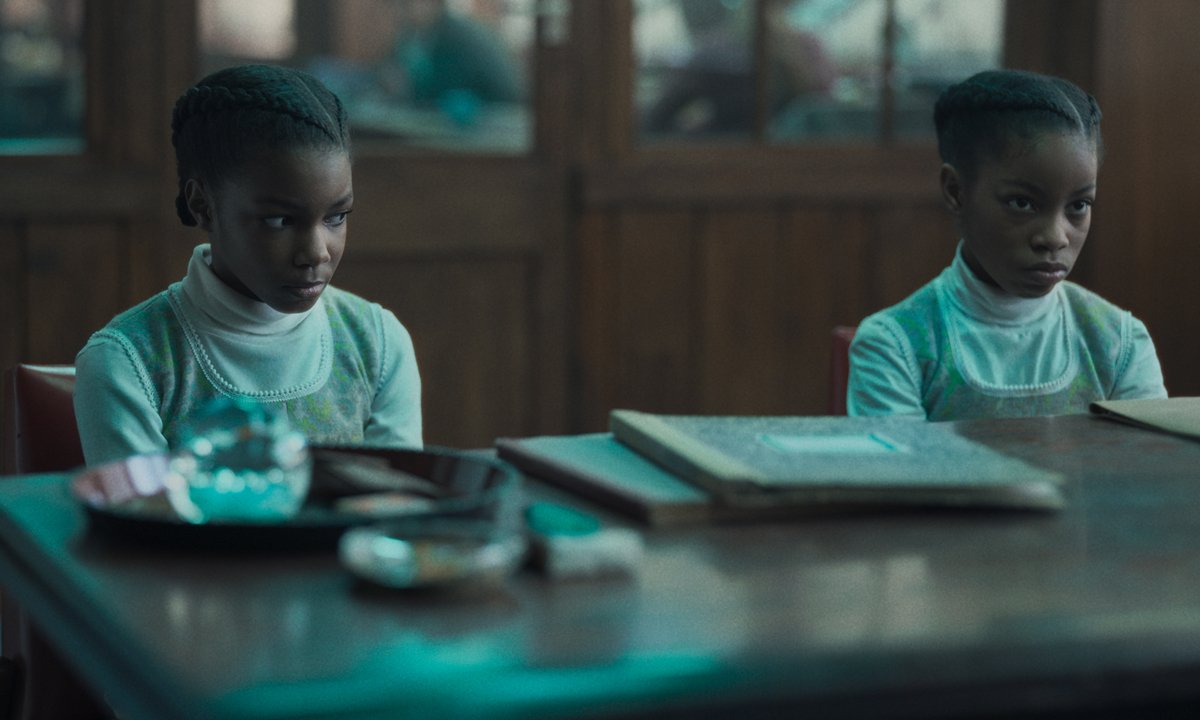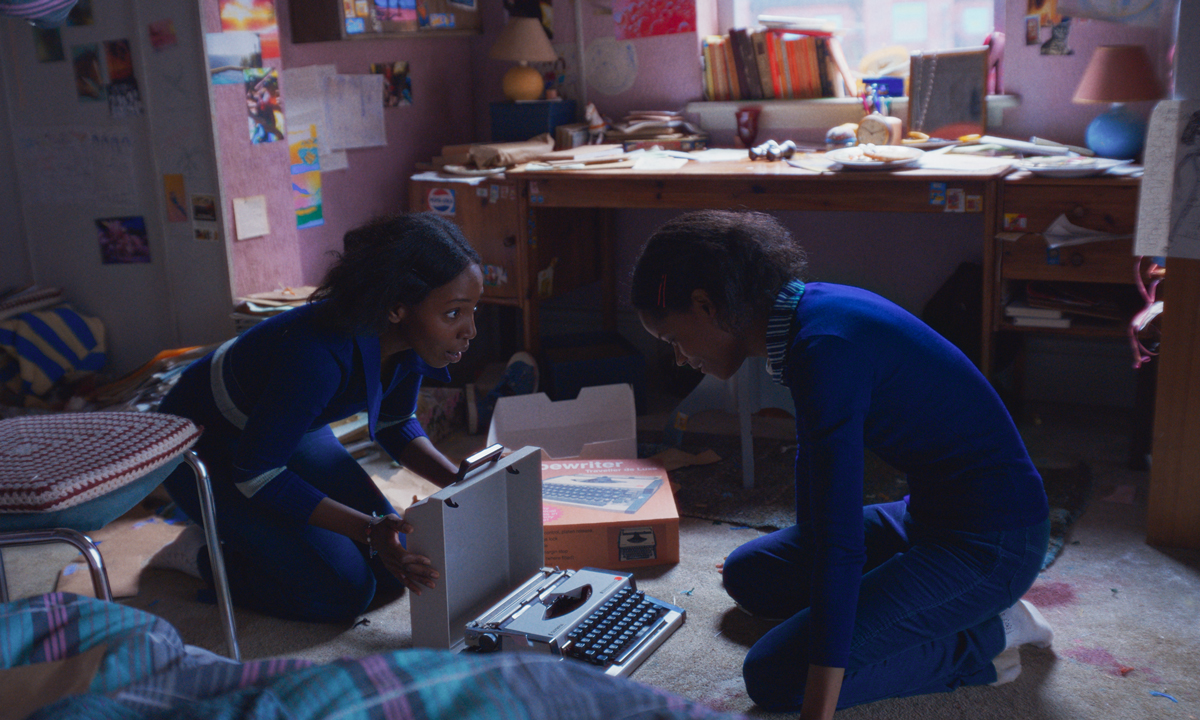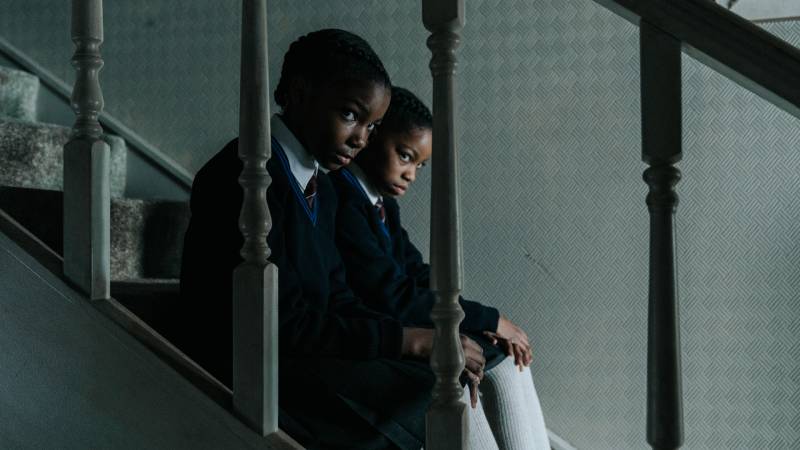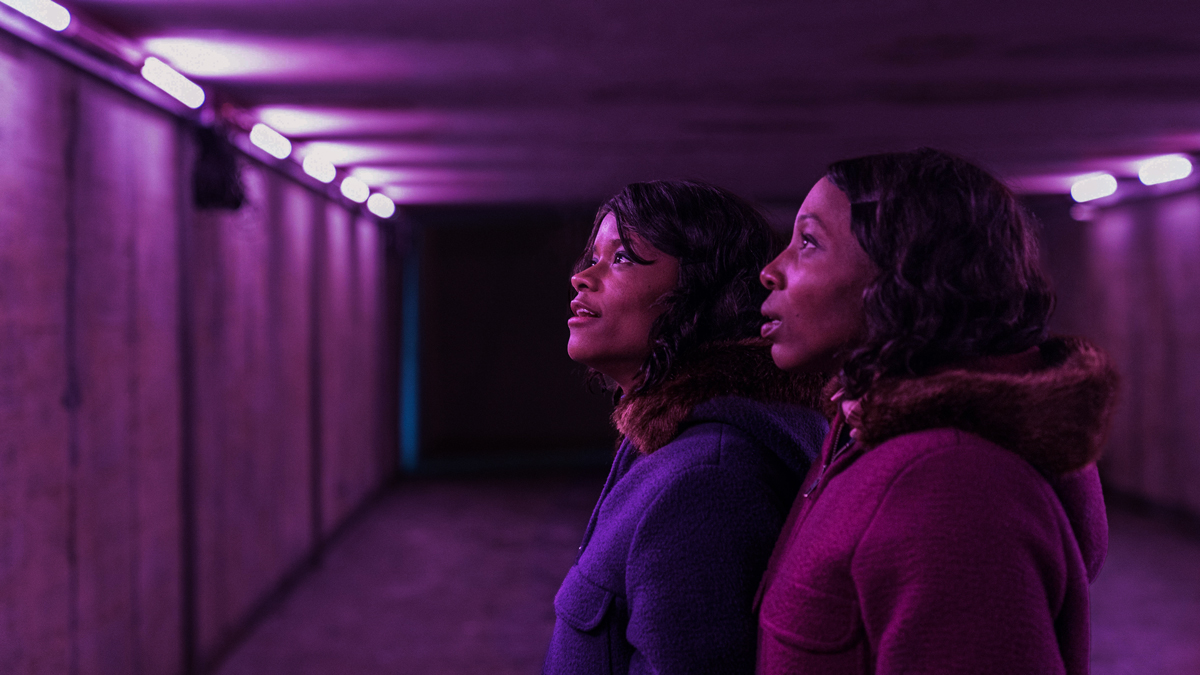Describing the ineffable yet oh-so-real connection between sisters—or any siblings—isn’t easy. Kudos to Polish director Agnieszka Smoczynska, whose artful, ambitious exploration of the perverse sisterhood of Jennifer and June Gibbons, The Silent Twins (opening Sept. 16), powerfully depicts the recognizable, universal aspects of a singularly notorious relationship.
Born in 1963, the real-life identical twins were the children of a couple from Barbados who emigrated to England. The only Black children in sight (along with their siblings), June and Jennifer created a language and retreated into a world of their own devising. By 1974, when the family relocated to Wales, the twins had ceased speaking in public and responding to their teachers, principals or psychologists.

June and Jennifer, like many sisters, fashioned a bond and a pact that no one else was privy to. Then they went further, striking an unhealthy contract that effectively locked them in their own embrace and eliminated outside influences. It would be simplistic to say that The Silent Twins is the saga of a love-hate relationship, but the hot coals of familial tension—between need and resentment, and autonomy and inseparability—fuel both the drama and its haunting aftereffects.
An important facet of June and Jennifer’s relationship—which Smoczynska, making her English-language debut, mines for its innocence, beauty and wit—was their creativity, manifested in their writings and drawings. Deployed in The Silent Twins as goofy animated scenes and lush fantasy sequences, they provide an antidote to the palette of dark blues and purples that the filmmaker uses to depict both the uninspiring U.K. institutions of the ’70s and the perpetually under-lit bedroom that served as the sisters’ studio, cloister, refuge—and battleground.
If The Silent Twins can’t fully explain the source or cause of the sisters’ extreme alienation—pervasive racism, inflexible academicians, feeling like perpetual outsiders—it has an unwavering grip on the volatile dynamics of sibling rivalry (potentially even more acute with identical twins). A commitment to codependence and cooperation can evaporate in a heartbeat in a fury of competition, as one pivotal scene illustrates.

June asks Jennifer for a loan in order to self-publish a book of her work. Jennifer is stunned, perhaps in part by her sister being ahead of her creatively, but primarily by the act of individual expression and ambition. It’s a kind of betrayal, even though June promises to repay her when Jennifer is ready to take the same step. (The book arrives sometime later, in a room they share in a quite different place, and Jennifer disrupts June’s pleasure by cranking the radio—setting off one of the ferocious fights that dot the film.)



